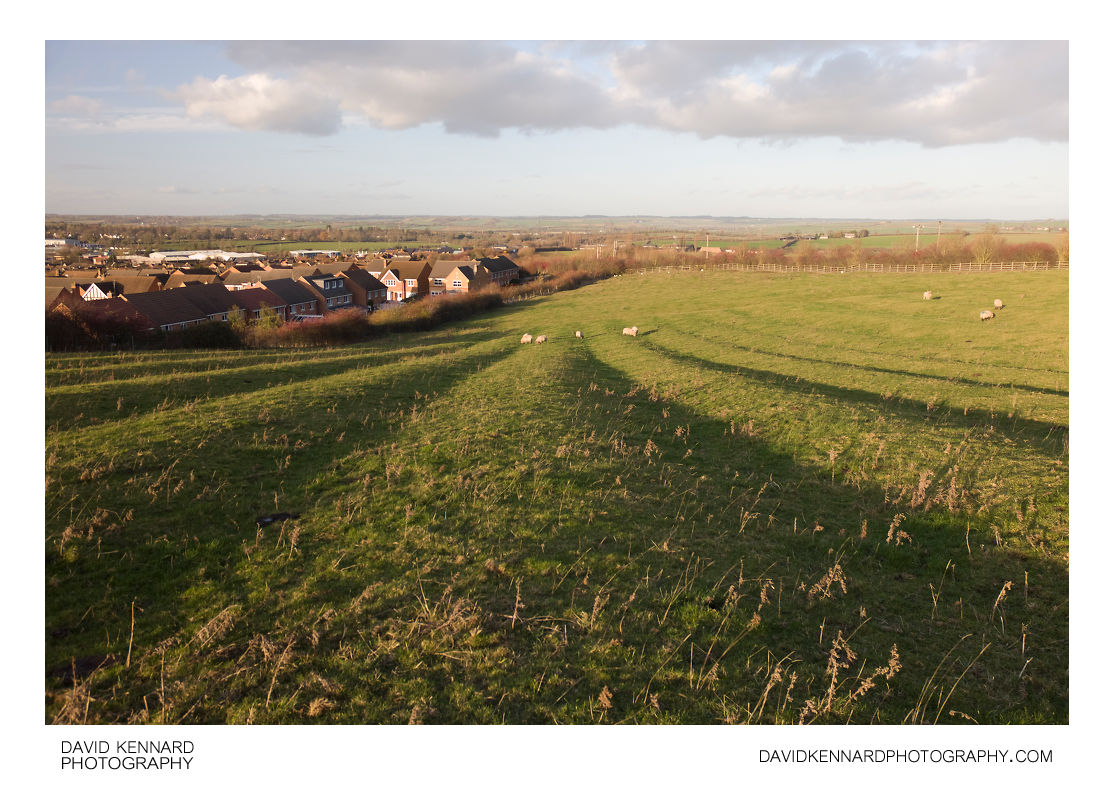Ridge and furrow on Clack Hill

Description
- Title:
- Ridge and furrow on Clack Hill
- Caption / Description:
-
Ridge and furrow on Clack Hill, to the east of Little Bowden, Leicestershire, England.
The ridged pattern of the field was created during the Medieval period when the land was farmed in strips. From Wikipedia (http://en.wikipedia.org/wiki/Ridge_and_furrow):
The earliest examples date to the immediate post-Roman period and the system was used until the 17th century in some areas. Ridge and furrow topography is found in Great Britain, Ireland and elsewhere in Europe. The surviving ridges are parallel, ranging from 3 to 22 yards (3 to 20 m) apart and up to 24 inches (61 cm) tall – they were much taller when in use. Older examples are often curved.
Ridge and furrow topography was a result of ploughing with non-reversible ploughs on the same strip of land each year. It is visible on land that was ploughed in the Middle Ages, but which has not been ploughed since then. No actively ploughed ridge and furrow survives.
- Tags / Keywords:
-
- Europe
- UK
- Britain
- England
- East Midlands
- Leicestershire
- Field
- Market Harborough
- Countryside
- Rural
- Ridge & furrow
- Little Bowden
- Clack Hill
Admin
- Date Original Photo Taken:
- Original File Name:
- _DIR0325_CF.dng
- Event:
- Rating:
- ☆
- Date this image added/last updated on website:
- Original File Dimensions:
- 4169px x 2790px
- File Type:
- JPEG
- Color Mode:
- Original Image Color Profile:
- Adobe RGB (1998)
Location
- Location Shown:
-
- Sublocation:
- Clack Hill
- City:
- Market Harborough
- Province/State:
- Leicestershire
- Country:
- United Kingdom
- World Region:
- Europe
- Location Created:
-
- Sublocation:
- Clack Hill
- City:
- Market Harborough
- Province/State:
- Leicestershire
- Country:
- United Kingdom
- World Region:
- Europe
- Geo-location:
- 52.474165, -0.89489666666667 View on map
Rights
- Copyright Status:
- Copyrighted
- Licensing Status:
- Rights Managed
- Available for Editorial Use:
- Yes
- Available for Commercial Use:
- No
- Copyright Notice:
- © 2011 Dave Kennard
Camera Data
- Date Digital Resource was created:
- Shutter speed:
- 1⁄25 s
- Aperture:
- f/6.3
- Camera Model:
- Fujifilm IS Pro
- ISO:
- 100
- Exposure Compensation:
- 0
- Focal Length:
- 18mm
- Focal Length (35mm equiv.):
- 27mm
- Metering Mode:
- Multi-segment
- Flash:
- Off, Did not fire
- Exposure Mode:
- Auto
- White Balance:
- Auto
- Light Source:
- Unknown
- Exposure Program:
- Aperture-priority AE
Additional shooting metadata
- Lens:
- Nikon AF-S DX Zoom Nikkor ED 18-70mm F3.5-4.5G(IF)
- Filters used:
-
- B+W Käsemann Circular Polariser MRC
- B+W 486 UV IR Cut MRC
- Additional Optics used:
- Setup:
- Handheld
Post Processing
- Image Modified:
- Software used:
-
- Adobe Camera RAW
- CornerFix
- Post Processing:
Cyan cast removed in CornerFix
12 recovery in ACR
Adjustment brush used in ACR to darken houses
Cropped & straightened in ACR
White balance adjusted in ACR
